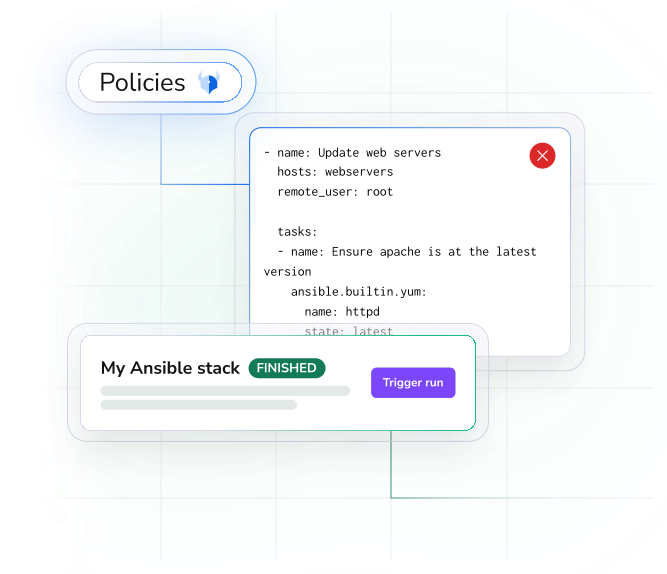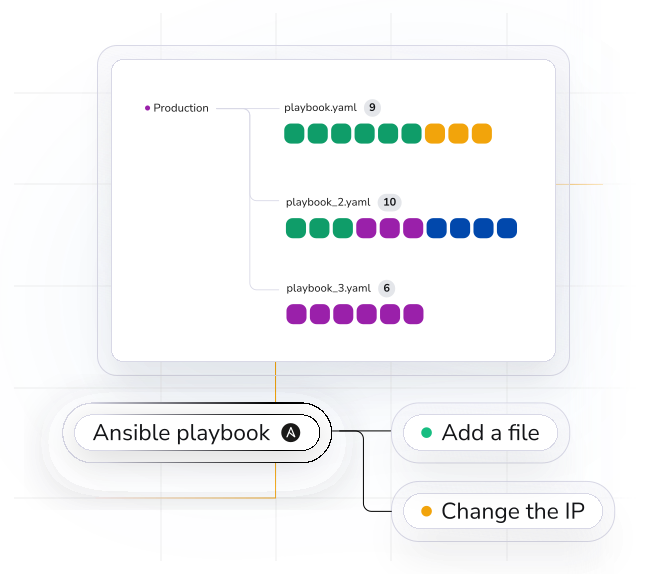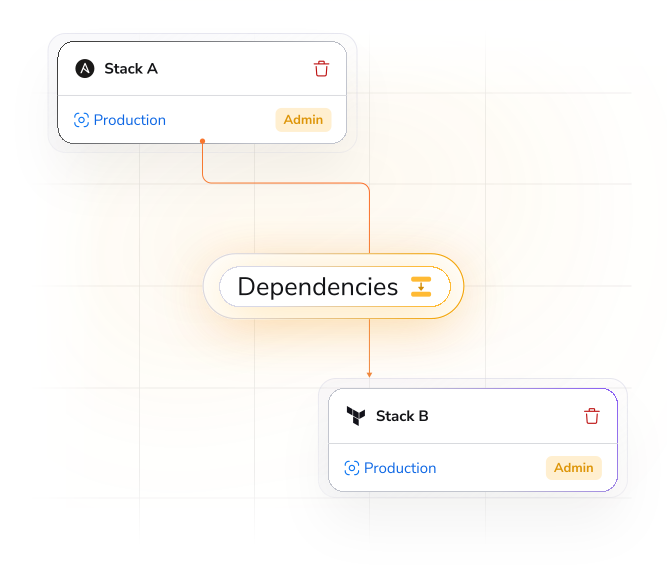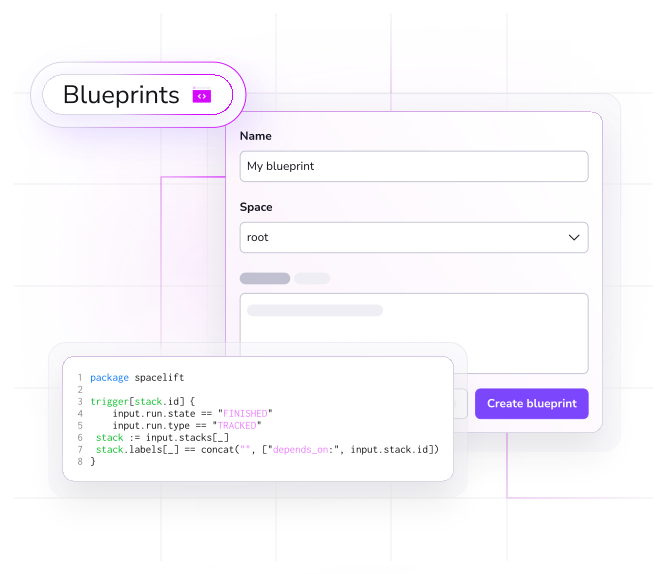Managing large-scale playbook execution is hard
Playbook Execution
The larger/more complex your environment is, the harder it is to manage deployed resources.
Limited Visibility
Running Ansible at scale means limited visibility into the success or failure of your runs.
Siloed Workflows
Managing provisioning and configuration separately slows developer velocity.
No Self-service
Developers shouldn’t have to write playbooks to get the infrastructure changes they need.
The Ecoyte Approach

Automate playbook execution
Manage the execution of Ansible playbooks from one central location:
- Dive into past playbooks with detailed guidance to simplify troubleshooting.
- Define custom policies for Ansible workflows.
- Simplify cross-host playbook execution by passing config parameters & automating follow-up runs.
Get insights into inventory and playbook run status
See all Ansible-managed resources with clear indicators of run success or failure:
- Instantly see the outcome of a run and pinpoint failures and issues.
- Easily get visibility into all your hosts and playbooks in one place.
- Quickly identify the root cause of Ansible failures and seamlessly resolve them.


Integrate IaC & Ansible workflows
Define workflows that combine IaC & Ansible to streamline provisioning and configuration management:
- Combine Ansible and any flavor of IaC pipelines into a single automated workflow.
- Build multi-infrastructure workflows with Stack Dependencies.
- Easily pass configuration parameters when triggering a run.
Give developers Ansible self-service
Make it easy for developers to extend self-service beyond provisioning:
- Provide Golden paths via the UI or API with Ansible Blueprints you define.
- Ensure your developers follow best practices across the entire infrastructure pipeline with Plan Policies.
- Make your developers happy by integrating Ansible playbooks into infrastructure self-service.




